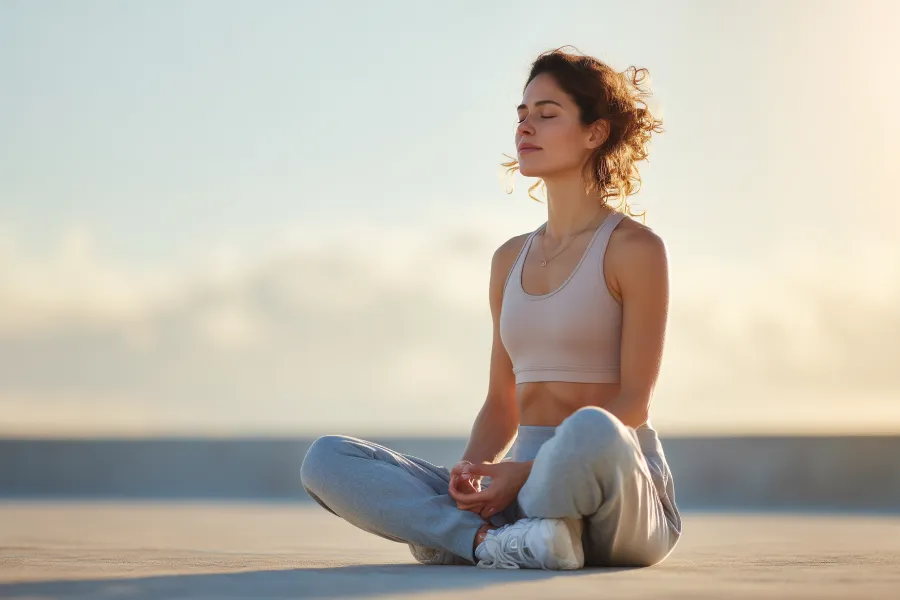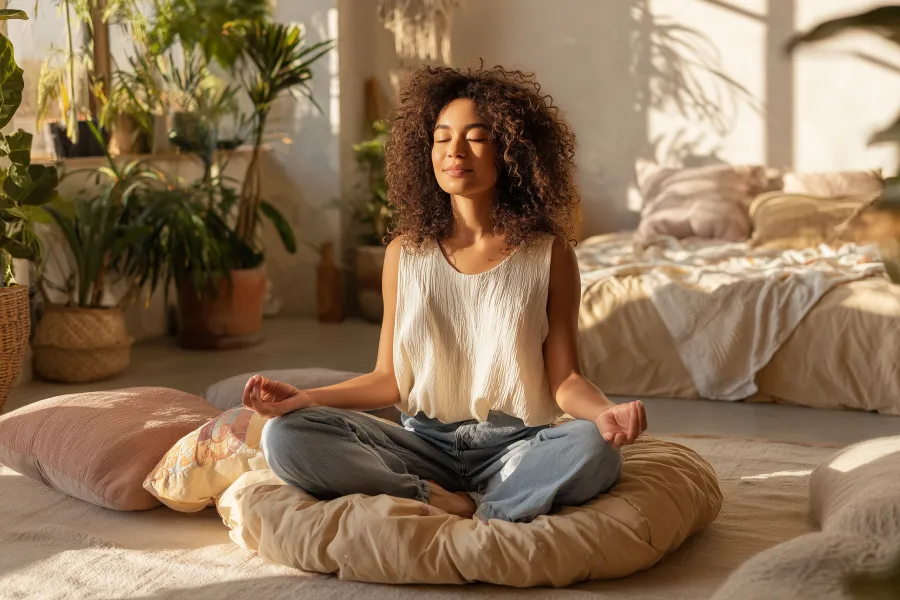
Anxiety creeps in quietly, often disguised as overthinking, racing thoughts, or that restless feeling you can’t shake. Many people turn to quick fixes, but lasting calm comes from building sustainable habits. When you practice mindfulness exercises for anxiety, you create a practical toolkit to steady your mind, calm your body, and ease stress without relying on temporary distractions.
That’s why resources like Calm in the Chaos: Mindfulness Exercises to Ease Anxiety matter. They provide practical strategies you can use daily, designed to fit into busy lives without adding pressure.

Breath is powerful. When anxiety strikes, your breathing often becomes shallow, fast, and tight. This fuels the cycle of panic. Learning Mindful Breathing Techniques gives you an anchor in those moments. By slowing your breath, you signal to your body that you’re safe.
A simple practice is the 4-4-6 method: inhale through your nose for four counts, hold for four, and exhale slowly for six. Repeat this several times and notice the shift. These moments of intentional breath not only calm your nervous system but also give your mind something concrete to focus on.
Mindfulness doesn’t have to mean sitting in silence for an hour. It can live in the everyday. Brushing your teeth, sipping morning coffee, or walking outside all become opportunities for grounding. A Daily Mindfulness Practice can be as simple as paying attention fully to what’s happening around you—without judgment.
These micro-moments of awareness help interrupt anxious loops. Instead of spiraling into “what ifs,” you redirect to the present moment. Over time, this creates resilience, making it easier to stay steady during stressful situations.
Anxiety often carries unspoken emotions—fear, frustration, or even grief. Journaling becomes a valuable exercise here. Writing down thoughts helps you see them clearly, instead of letting them swirl endlessly in your mind.
Pairing journaling with practices like Stress Relief Meditation deepens the benefits. Meditation teaches you to notice thoughts without attaching judgment. This skill is vital for anxiety because it creates space between stimulus and response. You realize you can observe worry without being consumed by it.
Evenings are often the hardest. Thoughts feel louder when the world quiets down. Practicing grounding rituals before bed can shift this. Light stretches, guided breathing, or body scans help you relax. Combining these exercises with tips from Improve Sleep Naturally ensures not only better rest but also reduced anxiety levels the next day.
This blend of rest and mindfulness shows that caring for the mind is inseparable from caring for the body. Anxiety eases when you respect both.

Your body holds onto stress physically, whether through tense shoulders or clenched jaws. Gentle movement helps release that tension. Practices like yoga, tai chi, or even mindful walking connect breath with motion. These activities encourage awareness while giving the body an outlet for nervous energy.
With consistent practice, you train your body to respond differently to triggers. This is how you begin to Ease Anxiety Naturally instead of battling it with sheer willpower. Movement restores balance without forcing stillness when the mind feels restless.
Trying to practice mindfulness without direction can feel overwhelming. Many people quit because they think they’re “bad at it.” But mindfulness isn’t about perfection—it’s about consistency. The Calm in the Chaos: Mindfulness Exercises to Ease Anxiety resource helps by breaking the process into simple, approachable exercises.
Benefits of guided mindfulness include:
When you have clear instructions, it’s easier to build lasting habits that actually change how your brain responds to stress.
Mindfulness is powerful on its own, but it becomes transformative when combined with other wellness practices. For instance, improving mood with positive lifestyle choices (explored in Boost Mood Naturally) makes anxiety easier to manage. When your body feels well-rested, nourished, and supported, mindfulness deepens naturally.
Even choices like scent can play a role. Wearing a calming fragrance, as discussed in Choose the Right Fragrance, becomes part of your mindfulness practice. A soothing lavender or sandalwood scent can anchor you during meditation or stressful moments.
By weaving these practices together, you build a holistic foundation for mental clarity and peace.
The hardest part of mindfulness isn’t starting—it’s staying consistent. Anxiety doesn’t disappear after one session, but progress comes with small daily efforts. Set aside just five minutes a day to begin. Over time, increase gradually, or add variety by exploring different techniques.
The key is to practice during calm moments, not just crises. That way, when anxiety spikes, your mind already knows what to do. Guided resources like Calm in the Chaos: Mindfulness Exercises to Ease Anxiety help maintain that commitment with fresh practices and reminders to stay grounded.

Anxiety doesn’t have to control your days. By practicing mindfulness consistently, you create more space between thought and reaction. Your mind learns to pause, your body relaxes, and your outlook shifts. You stop being consumed by anxiety and start living more fully.
This isn’t about escaping stress but about responding differently. Just like better sleep enhances energy or better nutrition fuels focus, mindfulness trains resilience. Over time, these small practices compound, creating a calmer, more present version of yourself.
[…] practices like mindfulness during breaks adds stability. For example, Mindfulness Exercises for Anxiety can reduce stress when adjusting to new environments. A grounding practice keeps you calm when […]
[…] design. For example, creating calm corners with soft lighting pairs perfectly with strategies from Mindfulness Exercises for Anxiety. Similarly, designing a restful bedroom works hand-in-hand with Improve Sleep Naturally. The right […]
Leave a comment